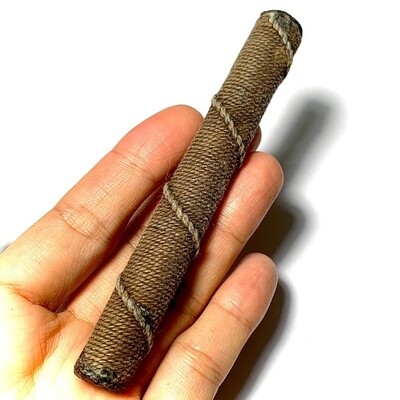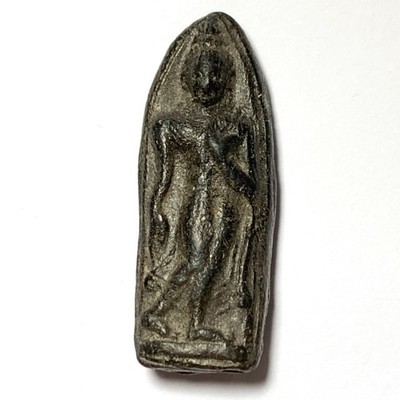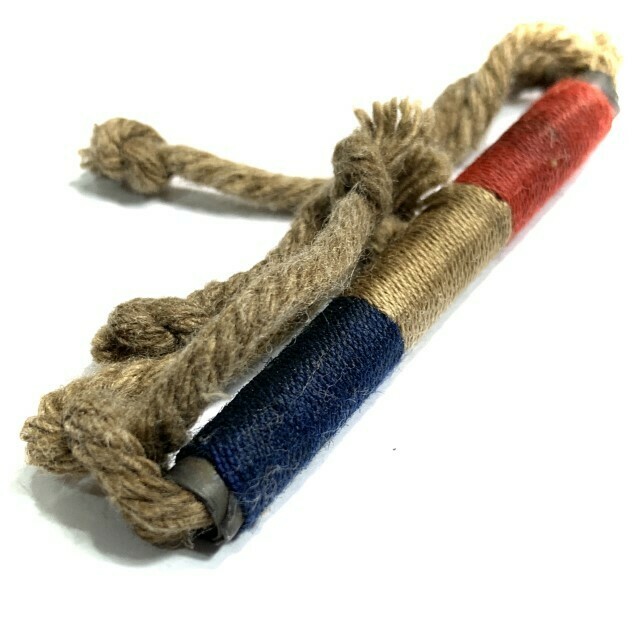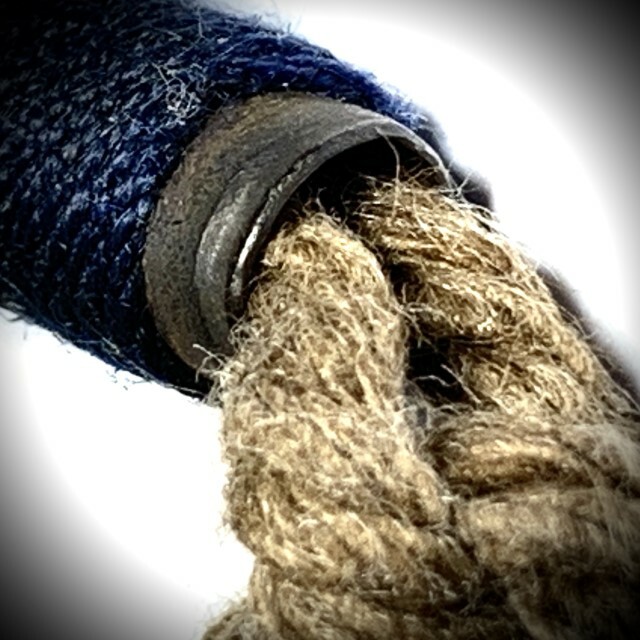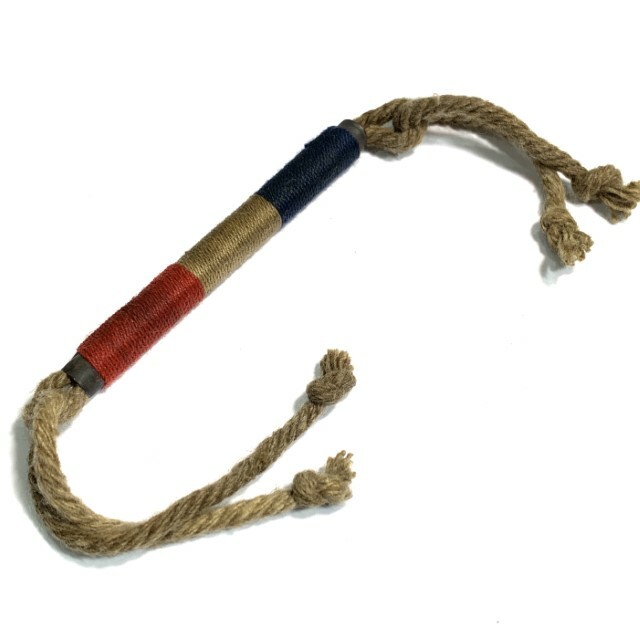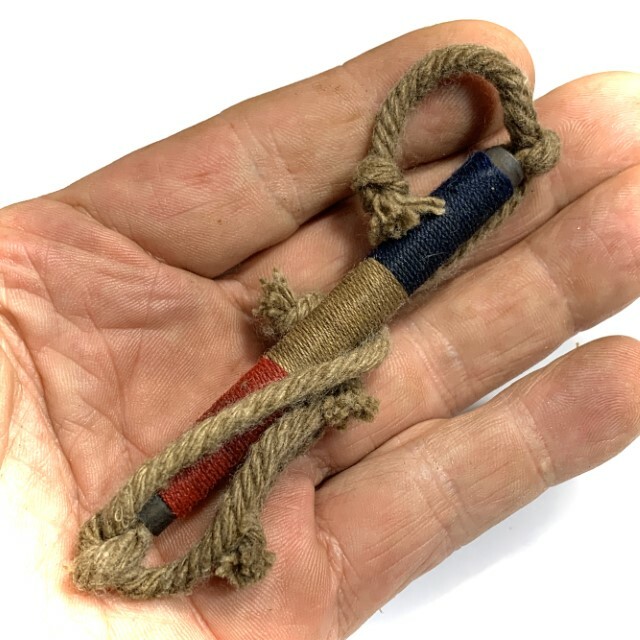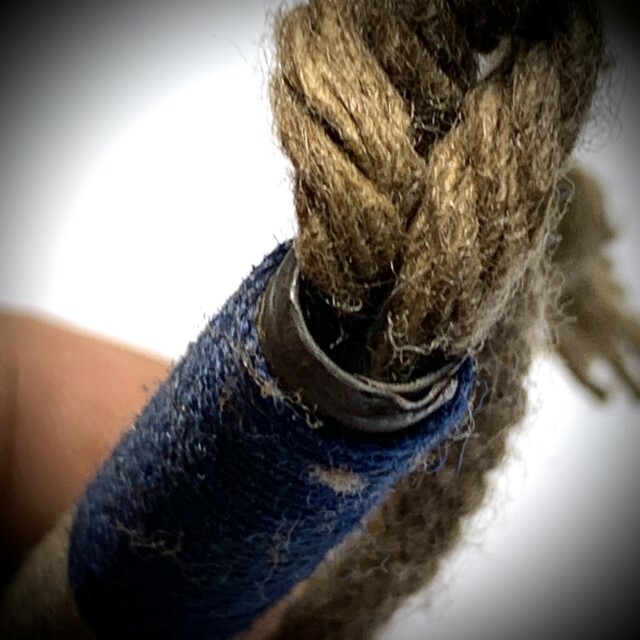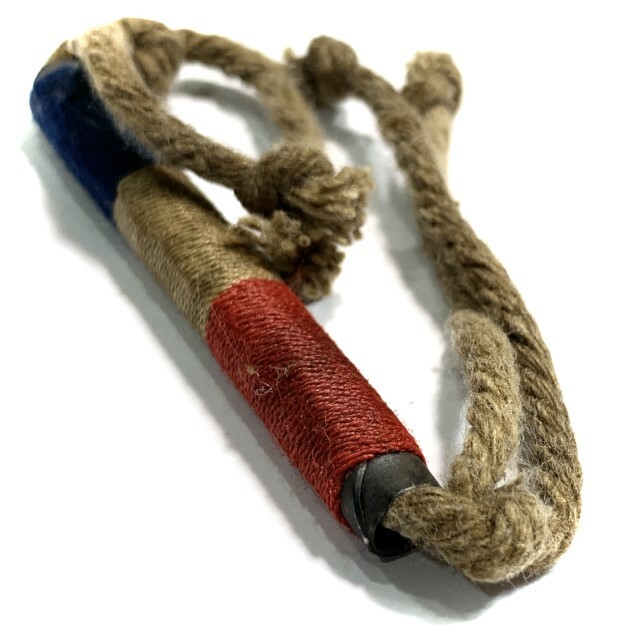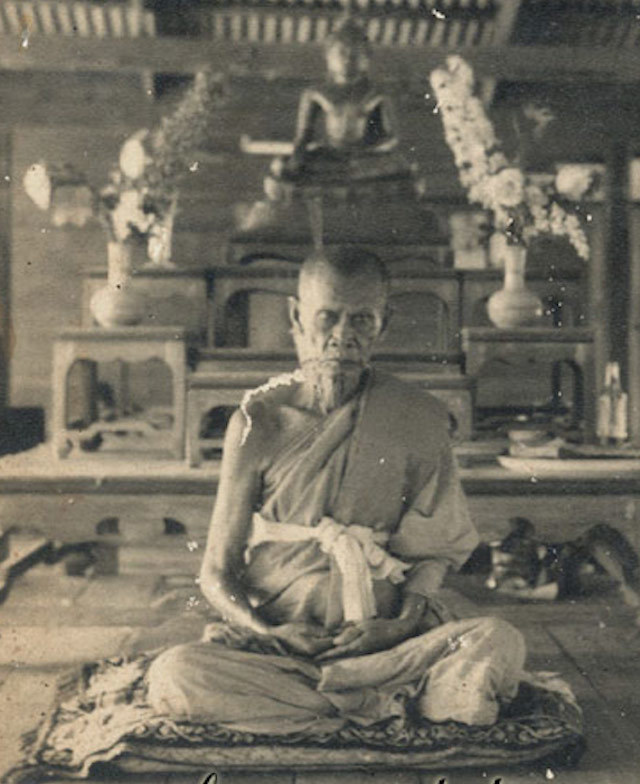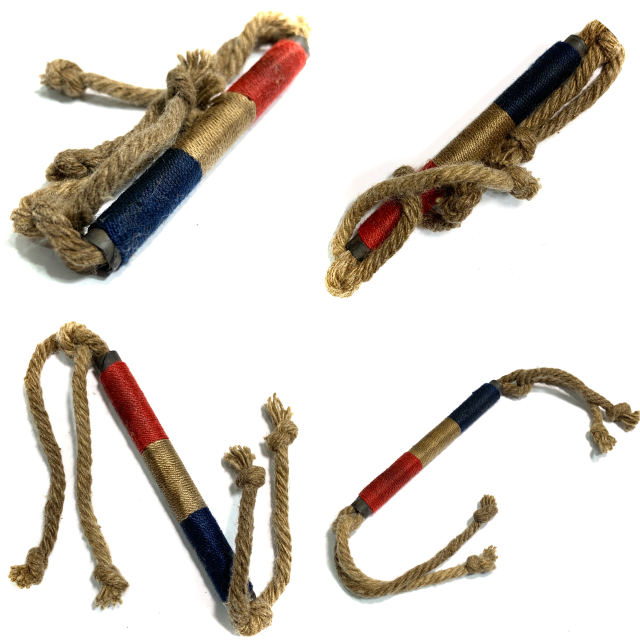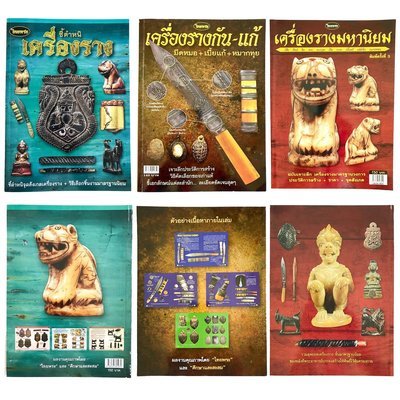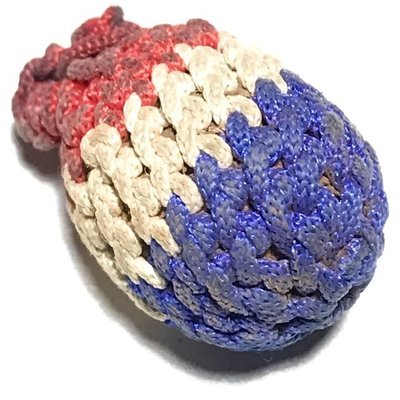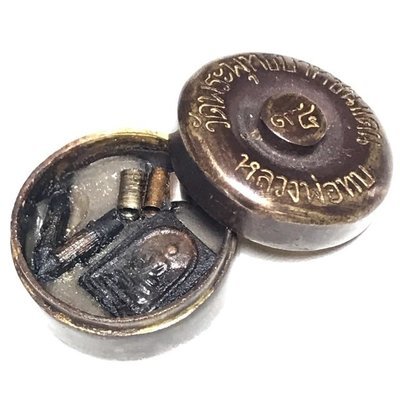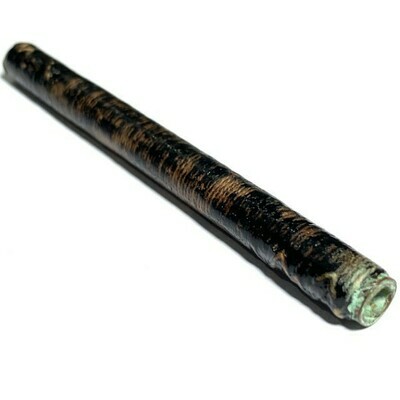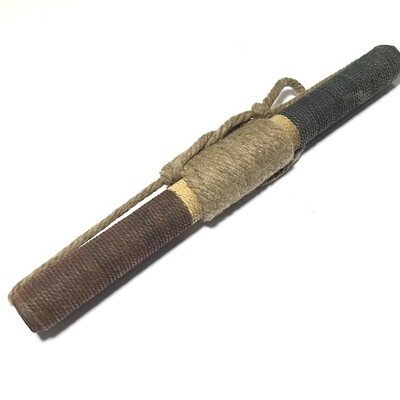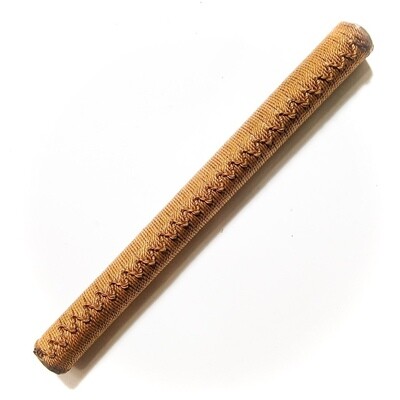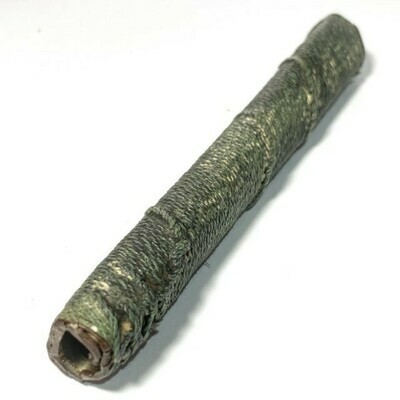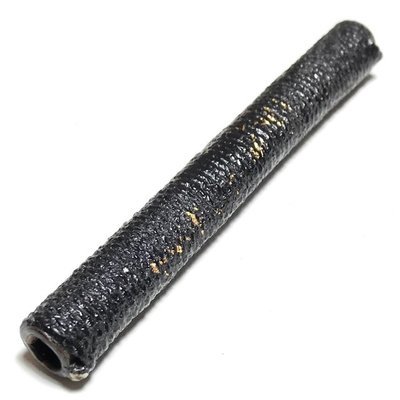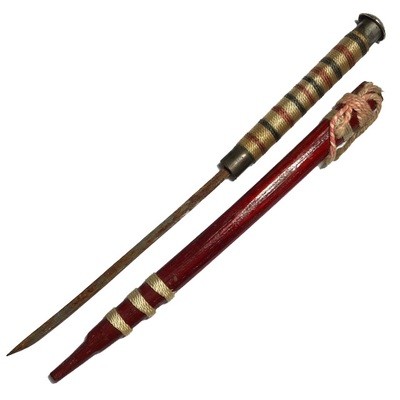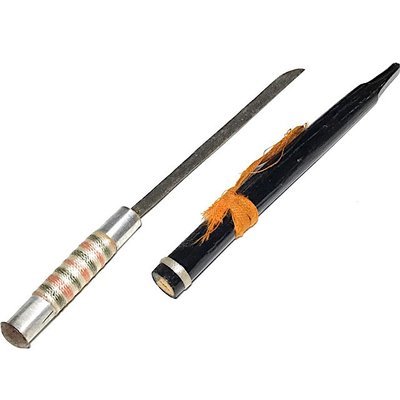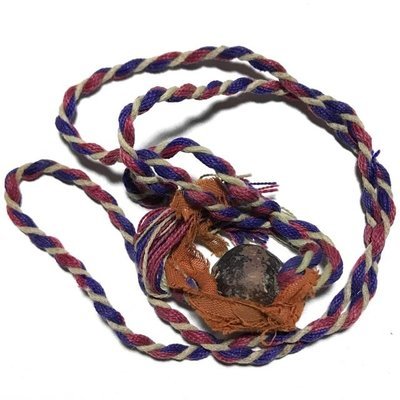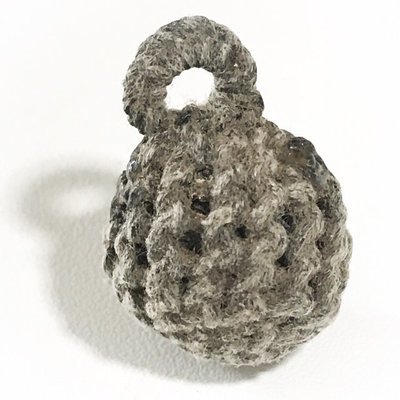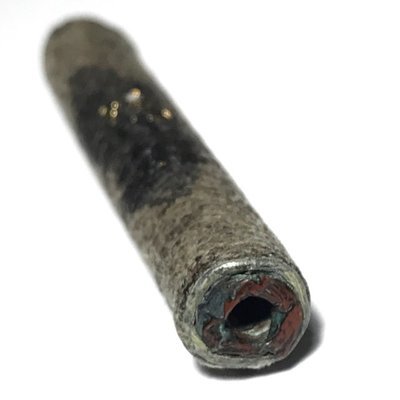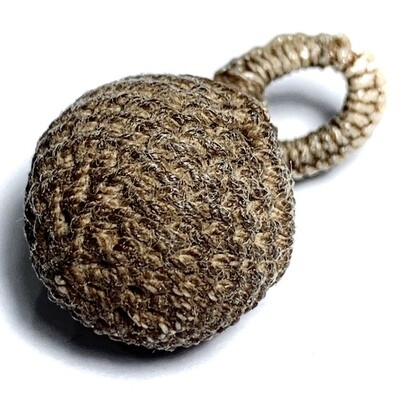A pristinely kept and extremely rare Rian Mangorn Koo Nuea Nava Loha Pim Pised Dtok Sorng Code Ma Wat Pha Nong Lom Run Sao Ha Maha Sethee 5th Lunar Saturday Blessing Ceremony Edition Guru Monk Coin, released in 2543 BE, to raise funds for the Kuti Songk Monks Huts and improve the facilities at the temple of Wat Pha Nong Lom.
This model of Rian Mangorn Koo twin dragons Monk Coin is a very rare Pim Pised (Niyom preferred) and differs from the majority of Rian Mangorn Koo Wat Pha Nong Lom Edition coins in Nava Loha, because of the double code MA stamp. Most coins of the Nava Loha series made for Wat Pha Nong Lom have only a single code Ma Stamp (on the Sangkati chest sash of the robe of Luang Phu), and only the Pim Pised special models received double code stamps. Only very few (unknown number) were distributed with double code stamp, making this not only a sacred, powerful master class amulet, but also a rare collectors piece.
The Rian Mangorn Koo of Luang Phu Hmun is, as are all of his amulets, known for the power of Jaroen Lap Wealth Increasement, and Lucky Fortunes, as well as for their Miraculous Protective Powers. Those born in the year of the dragon love to Bucha this amulet especially, for the obvious reason of the double dragon guardians.
For those with lower budgets, who seek power above collectability and rarity, we recommend to seek the Rian Mangorn Nuea Tong Daeng or Nava Loha single Code Ma, of the same edition, which carries a lower price than this special Nava Loha Pim Pised Gammagarn double code collectors edition model.
Takrut Takua Tong Chart 3 Inch Thai Flag Cord Wrapped Yantra Scroll 2497 BE Luang Por Tob Wat Chon Daen
3 Inches long size version, of the very rare classic 'Krueang Rang Niyom' preferred Category Takrut Takua Tone Yantra Scroll amulet, from the legendary Luang Por Tob, of Wat Chon Daen (Wat Chang Phueak). The Takrut is wrapped with Tricolored Red White and Blue Chueak Akom magical spellbound cord wrap, and Chueak Kart Aew for wrapping around the waist. This exhibit is early era, made from Nuea Takua Sacred Leaden Alchemical Alloy, Circa 2497-2498 BE, and is attached to cords for wrapping onto a Chueak Kart Aew cord belt (This Option is Provided at no extra cost if you need one).
The Takrut Tong Chart of Luang Por Tob, were made during the years between 2497 and 2510 BE era of Luang Por Tob's trajectory, the Takrut Tone Tong Chart, is highly renowned for its powerful Kong Grapan Chadtri, Klaew Klaad, and Maha Ud power. One of the most well known classic Kong Grapan maha Amnaj Serm Yos Klaew Klaad amulets of this Master, the takrut Tong Chart has become an Internationally famous amulet of immense National & Historical Importance to Thai Buddhist Folk. Hardly a Thai Buddhist in Thailand has not heard of the Takrut Tong Chart of Luang Por Tob, so Famous is it.
Free Registered Air Parcel Shipping Worldwide is Included. Luang Por Tob Tamma Banyō, or, ‘Pra Kroo Pichit Pacharājarn', of Wat Chon Daen, also known as Wat Chang Phueak, or, ‘the Temple of the White Elephant’, in Pechaburn, was a Nationally and Internationally famous Gaeji Ajarn Buddhist Master. He was highly renowned for his merits in building important and highly required edifices for various Buddhist Temples, and for the Sangha in general around the whole province of Petchaburn.
Luang Por Tob was born on third of March 2424 BE, and was the son of Mr Phueak Muang Dee, and Mrs Intr Muang Dee. His family were relatively comfortable and did not go without or suffer to any extent.
His parents gave him the name ’Tob’. When the young Tob reached the age of 16, he was taken to the temple of Wat Chang Phueak to place under the tutelage and care of Pra Ajarn Sī by his parents, to ordain as a Samanera Novice Monk. After his Ordination, Luang Por Tob studied the Dhamma Vinaya and Wityākom Occult Sciences to a highly advanced level.
In the year 2445 BE, he reached the age of 21, and was ordained as a fully fledged adult Bhikkhu in the Buddha Sasanā, at Wat Silāmōng. Pra Kroo Mueang was his Upachāya, and Pra Ajarn Parn as his Pra Gammawājājārn, and Pra Ajarn Si as his Pra Anusāwanājārn.
He was given the Ordained name of ’Tammabanyõ’, which means ‘He who has Great Knowledge in Dhamma’. After his ordination as a Bhikkhu, he traveled to practice Vipassanā Kammathān and Buddha Magic (Wityākom/Wicha) with Pra Ajarn Parn, and once more excelled to the point of reaching adept mastery of the various Wicha taught to him by Pra Ajarn Parn. After completing his studies of Wicha with Pra Ajarn Parn.
Luang Por Tob then went on Tudong forest wandering, to practice solitude and develop his Kammathāna practice. During the time he spent on Tudong, he met many great Masters, and learned their Magical Wicha.
During the times of Tudong, Luang Por Tob met and became very close friends with the great Luang Por Khien Tamma Ragkhidto, who was one of the Great Famous Masters of the Petchaburn Province in that Era. Luang Por Tob and Luang Por Khien became very close friends and companions.
Luang Por Tob, made merits building temples, Sala Bprian Dhamma Halls, Uposatha Shrine Rooms for temples in need, and restored many shrines, buildings and delapidated temple facilities scattered around the province.
He made countless merits both with worldly acts, and with the spiritual teachings of the Buddha-Dhamma, and the memory of his great deeds remains in the minds of the devotees to this day, and has passed into the living memory of the current generation of Devotees.
When Luang Por Tob went on Tudong to the municipality of Chon Daen, and stayed in the forest close to the locality, the local Buddhist Folk of Chon Daen came to pay reverence, and asked Luang Por Tob to build the temple of Wat pra Puttabat Khao Noi, which was at the time was only a small Samnak Songk Sangha station in the forest.
Luang Por Tob accepted and built Kuti Hut dormitories for the Monks, an Uposatha Shrine Room, a Sala Bprian, and improved the facilities of the temple, transforming it into a large and popular temple for the local community, which was then raised in official status from the status of ’Samnak Songk’ and registered as a ‘Wat’ (fully fledged Temple).
In the year 2490, Luang Por Tob was promoted in status to be awarded the status of Upachaya Monk (ordaining officer). In 2497 BE, he recieved the Royal decree of elevated status of ‘Pra Kroo Sanyabadtr. He was given the new name of Pra Kroo Wichit Pacharājārn. Luang Por Tob passed away on the 14th of March 2519 BE, on the fourth phase of the fourth lunar month, at the age of 95 years old, after 75 years of ordained life.
The current abbot of Wat Chang Phueak (Wat Chon Daen), Pra Kroo Wimol Pacharagij, who is a direct transmission lineage Looksit of Luang Por Tob, says that Luang Por Tob had given instructions before his death, that his body should not be cremated, because one day in the future, his body would become of use to the temple in some way.
So after his death, the Looksit of Luang Por Tob took his body, and placed it inside a glass coffin. The provincial offices then built a Roop Muean statue of Luang Por Tob, and a shrine area for its placement, so that Devotees could worship Luang Por Tob’s image and his Relics.
In the present Era, Wat Chang Phueak (Wat Chon Daen) is a place where Buddhists from around South-East Asia and the rest of the World come in Pilgramage and to sight-see. Hundreds and Thousands of devotees visit the temple every day to pay reverence to the relics of Luang Por Tob, and beseech his blessings. Luang Por Tob’s body has not deteriorated, and has calcified to become stone over the years, and remains in the same condition as it was when he was first placed into the glass coffin.
Each year, the temple performs a ritual to change his robes. The used robes which are removed, are cut up into pieces and given to the Devotees to use as articles of Faith, Good Fortune and Protection of the Blessings of Luang Por Tob.
The amulets of Luang Por Tob are amongst the most highly preferred of any master, with his Roop Lor Hnaa Farang, and the Rian Dode Rom Parachute coin, and Rian Paetch Rab coin being the most highly sought after amulets in his image, and his Takrut Tone spells being the most highly preferred of his Talismanic ‘Krueang Rang’ type amulets
Wadthumongkol - the Amulets of Luang Por Tob
As far as amulets are concerned, Luang Por Tob excelled in this Wicha, and created more than 200 different kinds of amulets during his trajectory as a Sorceror Monk, including Muan Sarn Sacred Powders amulets, Roop Lor Loi Ongk Statuettes, Takrut and other amulets. So many of his amulets have become world famous classics and highly renowned for their magical power. His famous Roop Lor Hnaa Farang, Roop Lor Hua Mai Kheed, and Roop Lor Awk Sir are immensely sought after by collectors and devotees of the amulet appreciation societies, and fetch very high prices these days.
His charms and Talismans are legendary for their power of Kong Grapan Chadtri, Klaew Klaad, and Maha Ud Magic. His Takrut Tone Tak Daay Cord-Bound Yantra scroll spells are the most highly sought after amulets in the ’Sian Pra’ amulet collector societies, and carry heavy prices to them, and are immensely rare to find. Luang Por Tob was the Kroo Ba Ajarn of many of the great Masters we know in recent times, including the great Luang Phu Khui of Wat Sap Takian, who is also now yet another deceased Master whose amulets and Wicha Kong Grapan Chadtri were legendary. Luang Por Tob is one of the most respected masters for possessing the Wicha of Luang Por Pit of Wat Makang, and the Great Luang Phu Sukh, used for his powerful Takrut amulets, and whose Pra Somdej, Monk Coins, and Metallic Roop Lor Boran amulets are amongst the rarest and most fervently guarded by devotees and collectors.
